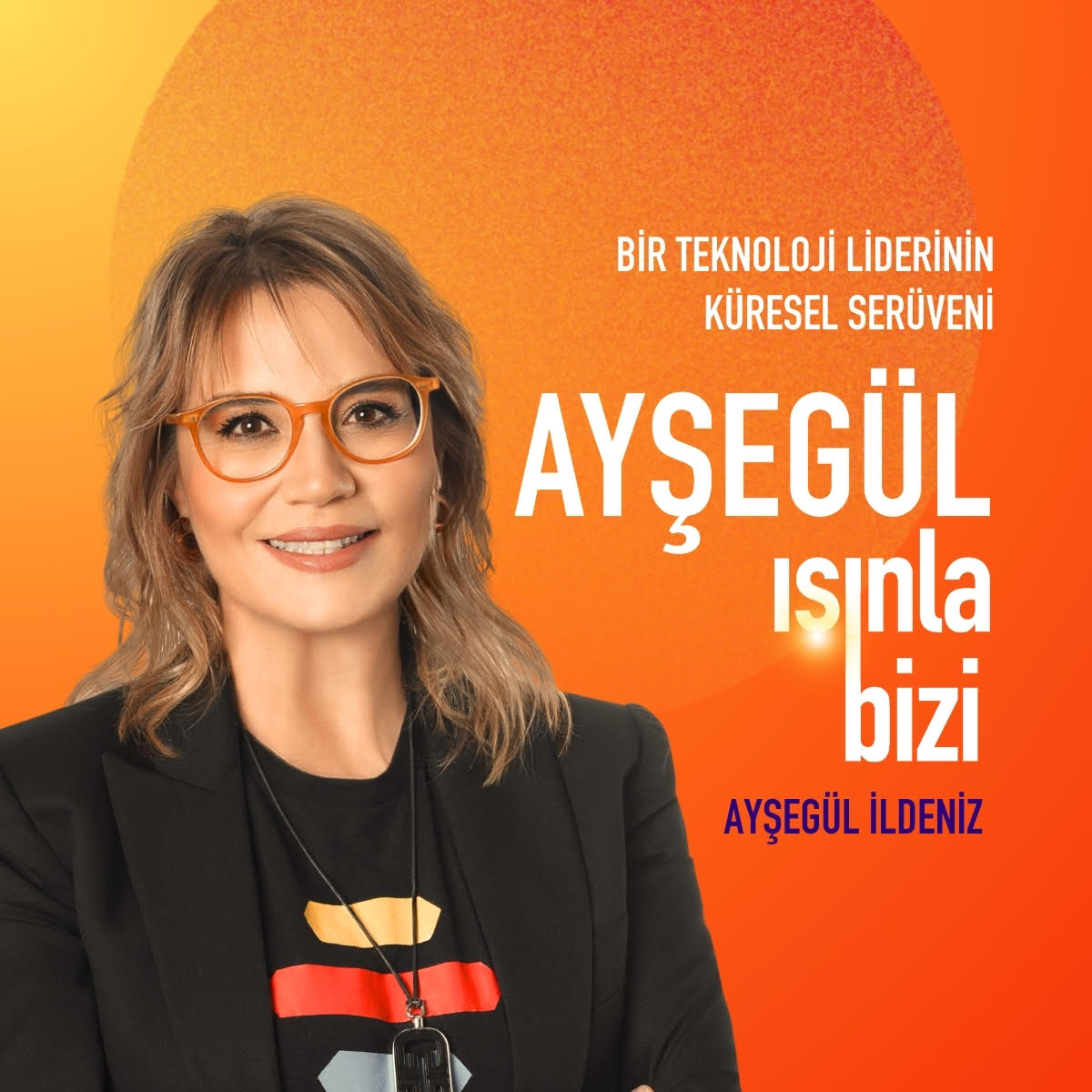
“Tabii ki yapabilirsiniz, hem de şahane şeyler yapabilirsiniz, hatta hemen yapmalısınız…” Ayşegül İldeniz
Dünya çapında geliştirdiği ürünlerle global akıllı teknoloji dünyasının mimarlarından biri olan, Fast Company tarafından 2015 yılında dünyanın en yaratıcı 100 kişisinden biri seçilen Ayşegül İldeniz’in Ayşegül Işınla Bizi isimli kitabı Doğan Kitap tarafından yayımlandı. Kitapta, İldeniz’in Afrika’dan Amerika’ya gittiği ülkelerin, tanık olduğu hikâyelerin, dokunduğu insanların, dünya ve toplum için ürettiği teknolojik dönüşümlerin izini süreceksiniz.
Ayşegül Işınla Bizi, bir teknoloji lideri olan Ayşegül İldeniz’in sadece dünya çapındaki başarıları ya da yaşamöyküsüne değil aynı zamanda geleceği yaratmanın sonsuz heyecanına ortak olmaya davet ediyor okurunu.
Ayşegül İldeniz’in İzmir’de kitaplarla dolu bir evde başlayan ve Silikon Vadisine ulaşan yaşam serüveni, dünyanın birçok ülkesine yayılırken imkânsızı başarma tutkusundan ilham alacaksınız.
Ayşegül Işınla Bizi kitabı, yazarın kendisini ve dokunduğu insanları hayal ettiği geleceğe ışınlama yolculuğu. İldeniz kendimizi sorgulamamızı, kendi Kuzey Yıldızımızı bulmamızı istiyor; kendi hayatını ise "mümkün olanın en iyisini yap ve olabilecek en fazla etkiyi yarat” mottosuyla sürdürüyor.
Ayşegül İldeniz tarihin teknolojiyle yazıldığı bu dönemeçte var olmaktan heyecan duyuyor ve toplumu bu dönüşümü bir an önce kucaklamaya davet ediyor.
Dönüşüme açık ve özgür
"Dönüşüme açık olun, yeni düşler kurup onları var edin. Yolculuğa başlayacak kadar cesur, sürdürecek kadar özgür olun."
Yaşam festivali
"Yaşamı bir mücadele silsilesi değil, öğreneceğim ve yaşayacağım bir merak ve keyif yolculuğu olarak görmeye başladım. Buna her anını içinize çekip yön verdiğiniz bir yaşam festivali diyelim.”
Her şeyi değiştirin, imkansız şeyleri yapın
"Sıkıldığınız ve istemediğiniz her şeyi değiştirin. Aşkla bağlı olmadığınız hiçbir şeyi yapmayın… Büyük sıçramalar yapacağınız imkânsız şeyleri yapın…”
Sonsuz denizler
"İnsanların başarısının düş kurabilme kapasitesiyle orantılı olduğunu anladım. Çok şanslıyım, çünkü benim düşlerim hiç bitmiyor. Keşfedilip ele geçirilecek sonsuz denizler var önümde!"
Yazar Hakkında:
Ayşegül İldeniz, İzmir’den Silikon Vadisi’ne uzanan yaşam yolculuğu boyunca birçok topluluk ve insanın hayatını değiştirmiş, inovasyon, yapay zekâ, teknoloji, gelecek vizyonu konularında öncülük yapmış küresel bir teknoloji lideri. Fast Company tarafından dünyanın en yaratıcı 100 kişisinden biri seçilen (2015) İldeniz, global teknoloji devi Intel’de Yeni Teknolojiler Grubu Dünya Başkan Yardımcılığı, ABD’nin akıllı enerji öncüsü SSN’de COO’luk yapmış ve akıllı teknolojiler üzerine çok sayıda ödül almıştır. Çeşitli uluslararası kurumlarda yönetim kurulu üyesi olan Ayşegül İldeniz, Silikon Vadisi’nde girişimcilik ve danışmanlık yapıyor.
İldeniz, sivil toplumda teknolojiyle dönüşüm, akıllı ve yapay zekâyla gelecek ve inovasyon politikası konularında öncü bir isim. Amerika’nın en etkili 3. Türk kadını (TOA, 2015), Türkiye’de “Yılın Bilişim Kadını” ve “Yılın Kadın Yöneticisi” (Dünya Gazetesi, 2004, 2006) seçildi. 2010’da Eisenhower Fellowship’e seçilen İldeniz, TÜSİAD Silikon Vadisi Network Başkanı Turkish Philanthropy Funds Yönetim Kurulu üyesi.
Arkeoloji, antik diller ve tarih meraklısı olan İldeniz, yüzden fazla ülkede seyahat etmiş bir gezgin ve macera sporları tutkunu. Amerika ve İstanbul arasında çalışmalarına devam eden Ayşegül İldeniz aynı zamanda Gazete Oksijen’deki köşesinde teknoloji dünyasına dair yazılar yazıyor.